
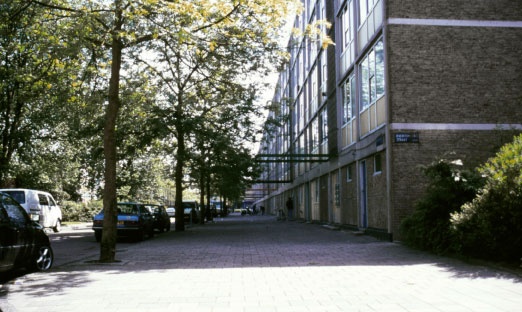
Cornelis Van Eesteren conceived the General Extension Plan for Amsterdam in 1929–1932. In 1935 the plan was approved by the city council. Economic depression and German occupation delayed the start of construction for more than 20 years.
Dutch society has evolved in ways that couldn’t have been foreseen 75 years ago. The buildings are depreciated financially after 50 years.
So what to do now?
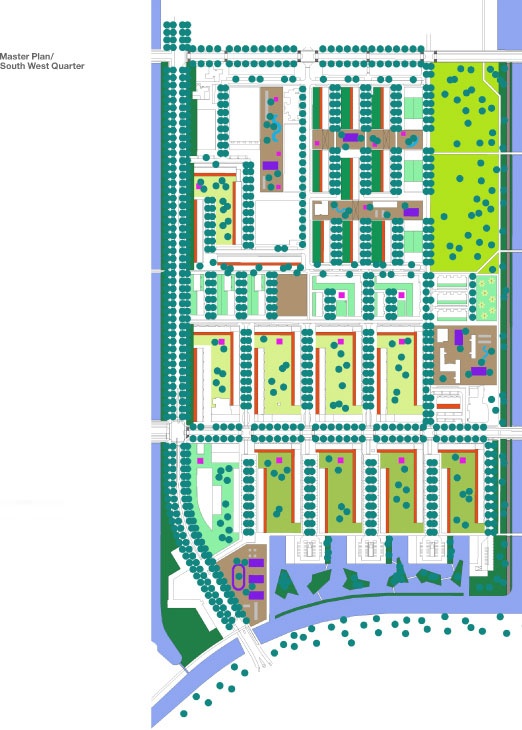
Apartments, when built in the Fifties, were meant to house families of the post-war generation. Now they barely are considered fit for the aging couples that the children left behind. Schools have to serve another generation of pupils, shops cater to new customers, churches lose their function and small scale industry is moving out. This calls for an urban intervention.
This redevelopment of the built-up environment can be – and is – handled by housing corporations, developers and architects. But then there remains the issue of open public space. Amsterdam-West is full of it. Streets, squares, green areas, water, and gardens that might be private, but are not fenced off. Next to taking care of buildings, something has to be done about public space.
The Master Plan for Zuidwestkwadrant establishes this as follows:
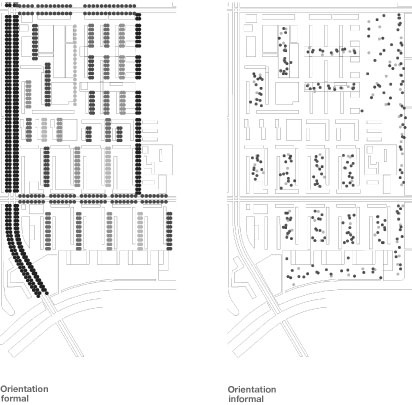
Orientation
The rectangular design of the Van Eesteren scheme can be enhanced by planting trees in different ways when they are up for renewal. In the North-South direction the instruction is to be rectilinear, in the East-West scattering is the norm. This helps to differentiate the environment and supports orientation.
 |
Ecology Originally, Amsterdam-West was a peat-cutting area. Remnants of that original landscape, now been built upon, are again connected to support ecological diversity and an abundance of species. |
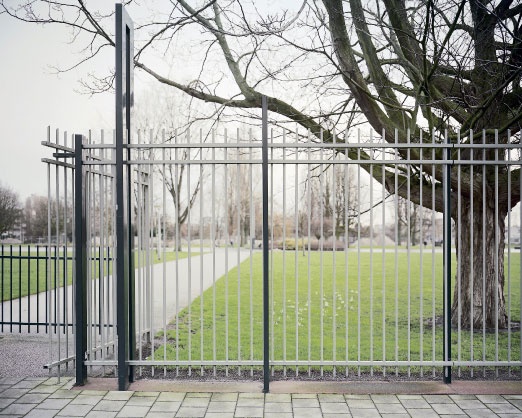
Borders
To enjoy it, space needs to be defined. A fence, designed especially for this project makes clear what remains public and what has become private.
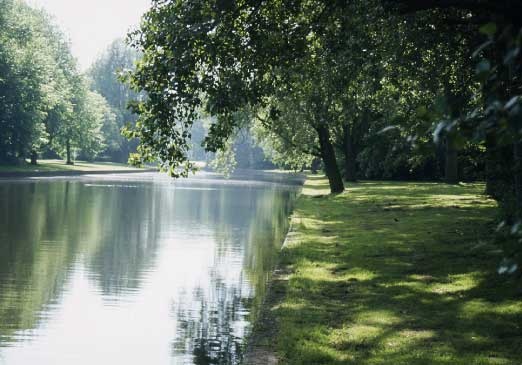
Parks
By redesigning existing open spaces, two parks are created. A city park in the middle of the larger neighbourhood of Osdorp serves the whole community, a water park at the edge of the area helps to establish an ecological link between two main lakes.
Client
City of Amsterdam
Borough Osdorp
Credits
Bram Breedveld
Landscape architect
Bureau B+B
Landscape Architecture
and Urban Planning
Photography
Kim Zwarts
Michael van Gessel